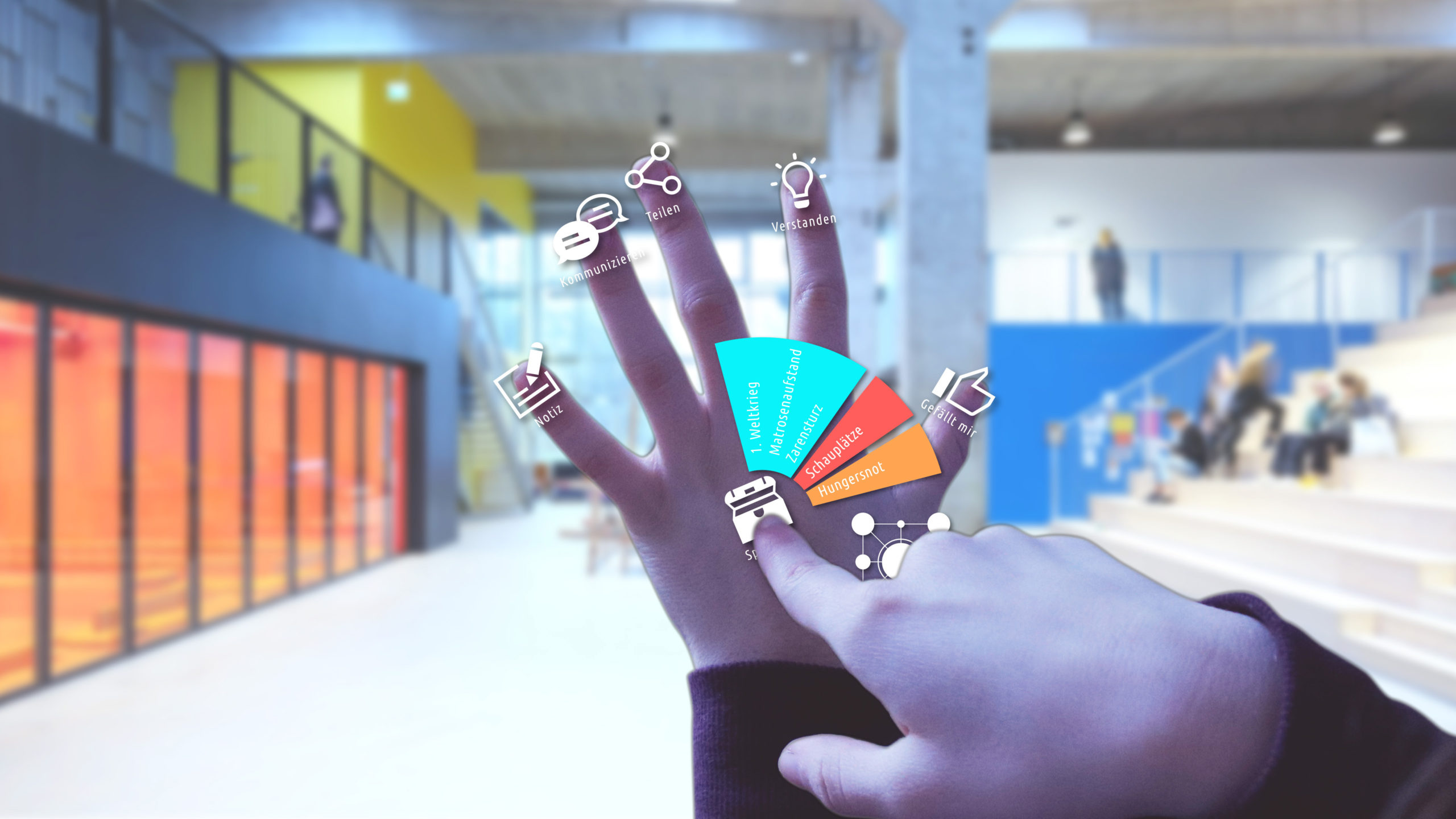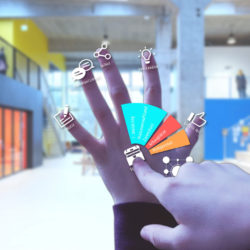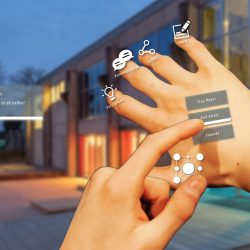SENSAI – Sensible Tutor with AI
Description
SENSAI is a learning system of the future that accompanies children on their path of self-development. The interface is projected into the room using augmented reality and can be controlled by voice, touch or eye and finger gestures. It offers all media possibilities to open up independent subject areas.What is the Topic?
The design of the educational-system of the future is a radical proposal of a completely rethought free-learning-system based on man‘s original curiosity about himself and the world. It‘s a utopia that questions the tried and tested and relies on a growing generation of free-thinkers who will be up to the challenges of the future. Artificial intelligence becomes part of the human being. 2035 people learn voluntarily for themselves. Knowledge is freely available to all, but what you do with it is crucial for your own future. School, as it exists today, no longer exists. Everyone learns individually with their companion.
Why does it look like this?
All elements of the learning-system can be freely placed in the room as a projection with the help of the AR Smart Lens. Known finger-gestures from the touchscreen-area such as zoom, tap, scroll, drag, etc. are recognized by the Lens and can be used in the projection. Alternatively, the elements can also be addressed by eye-gestures. A focused video is played with double eyelid-blink. Images move with the eye. If the child has selected a historical theme, neighbouring themes with context-reference will still be displayed. This creates a holistic picture of the scope of the theme and inspires the child.
What is special?
The learning system consists of an implanted Smart Lens and a wearable with artificial intelligence for the ear. For the first few years, the children meet in public eduras. There they are looked after by pedagogues and supported in using their intelligent assistance system (companion). From the learning cloud, learning units are selected by the accompanying persons. They do not depend on age or class level, but are divided into levels like computer games. The further the children progress in the levels, the higher the demands but also the possibilities and degrees of freedom. After completing the basic knowledge, the children can decide what, where and how they want to learn. The education system of 2035 focuses on optimisation through individualisation, personalisation of learning content and motivation through gamification.
What is new?
My concept of an individual learning-system combines the latest findings of brain research (neurodidactics) with philosophical approaches from the epoch of humanism and implements them with future-oriented technology. Education becomes a learning-adventure through playful elements from the gaming industry. Learning and leisure are no longer opposites but go hand in hand, as the learning-system is available at all times and is a lifelong companion. It is always up to date and adapts optimally to its users. Learning content is not taught but researched. The reference to the user and the overall-context is always established. Topics are never considered in isolation.






